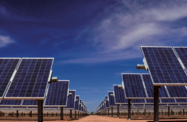Côte d’Ivoire: Ramping up electricity
 En Français
En Français
In the midst of renewed economic growth, efforts are underway in Côte d’Ivoire to increase hydroelectric and thermal electricity generation. As an increasing population and strong secondary and tertiary sector growth drive demand for residential and industrial electricity, improvements in distribution and network access will need to be accompanied by increases in supply.
The lion’s share in increasing production will be taken on by foreign investors. With construction on the long-awaited hydroelectric dam at Soubré having begun in late February, Côte d’Ivoire is taking a major step toward expanding its output. Financed with a concessional loan of CFA239bn (€364.35m) from China-based Eximbank and CFA92bn (€140.25m) from the Ivoirian government, the total cost of this five-year project is an estimated CFA331bn (€504.61m).
The dam, which is to be built by China’s SinoHydro and supervised by Belgium-based Tractebel Engineering, will have an installed capacity of 275 MW and generate 1100 GWh per year, thereby significantly increasing annual national output, which stood at 5900 GWh as of 2009. A power grid, including a 365-km-high voltage cable (225 KV) is set to be built between Soubré and Abidjan’s Yopougon district.
The authorities also plan to begin construction on another hydroelectric dam before 2015, marking a return to the country’s traditional focus on hydroelectricity. After completing works on dams in Kossou in 1972, Taabo in 1979 and Buyo in 1981, the emphasis on electricity production shifted to thermal energy in the 1990s, due to significant offshore natural gas discoveries. Currently, more than 60% of the country’s electricity is produced by thermal power stations, while 35% is generated from hydroelectric sources.
Although hydroelectricity has the benefit of providing energy that is both renewable and unaffected by gas pricing mechanisms, thermal energy remains a priority, and the government has reduced the negotiated price of gas supplied by producers, such as local Bouygues subsidiary Foxtrot, Canada-based CNR and the UK-based Afren, to thermal plants.
Several thermal projects are underway, starting with expansion at the Azito Power Plant, which is owned by Globeleq (76.9%) and by Industrial Promotion Services West Africa (IPS WA, 23.1%), andthe first two phases were completed in 1999 and 2000, respectively. Azito-3 will add another 150 MW to the combined 300 MW of the first two plants, providing an additional 1000 GWh per year to the company’s current output of 2200 GWh per year, amounting to over one-third of Côte d’Ivoire’s electricity production.
Alongside guarantees from the World Bank’s Multilateral Investment Guarantee Agency, around CFA174bn (€265.26m) of financing has been secured from a number of firms, including Globeleq, IPS WA, the International Finance Corporation, the West African Development Bank and the African Development Bank, among others. Hyundai, which signed a fixed-price turnkey contract with Azito in December 2011, will begin the 27 months of construction on the CFA227bn (€346.06m) project now that financing has been secured.
Meanwhile, US-based ContourGlobal and the national petroleum company Petroci plan to begin work on a 330-MW plant in Abatta in 2013, after having signed a build-operate-transfer concession agreement in June 2012 for the CFA300bn (€457.35m) project. In the long term, government officials also envisage a 450-MW thermal plant in Bingerville. Although domestic gas reserves may be insufficient to justify investments in additional thermal plants, a survey of available national gas reserves has demonstrated that they will be able to ensure supply for the Azito project.
Part of the government’s initiative to improve electricity infrastructure also relies on better distribution, which will benefit from some CFA8bn (€12.19m) of the Presidential Emergency Programme, which aims to accelerate critical infrastructure projects, that will be used to improve and subsidise access to the electricity network.
Progress on these projects is crucial if Côte d’Ivoire is to continue to satisfy domestic demand while pursuing further export commitments, with a recent increase in supply to Burkina Faso and new deals with Benin and Liberia. The IMF has been pressuring the authorities to raise local prices in order to finance the network’s modernisation and expansion and production increases, highlighting the importance of exports, as Côte d’Ivoire’s clients are charged prices higher than those paid domestically.. In this context, the government recently bowed to the IMF’s pressure by raising prices for local industry; however, selling an increase in prices to Ivorian households may prove far more difficult.



